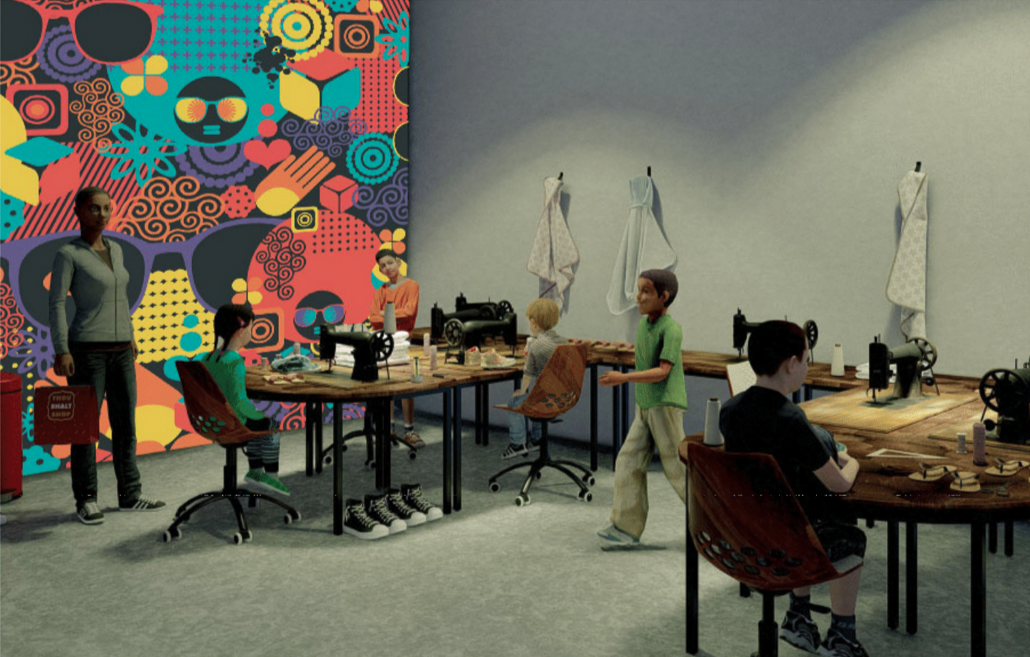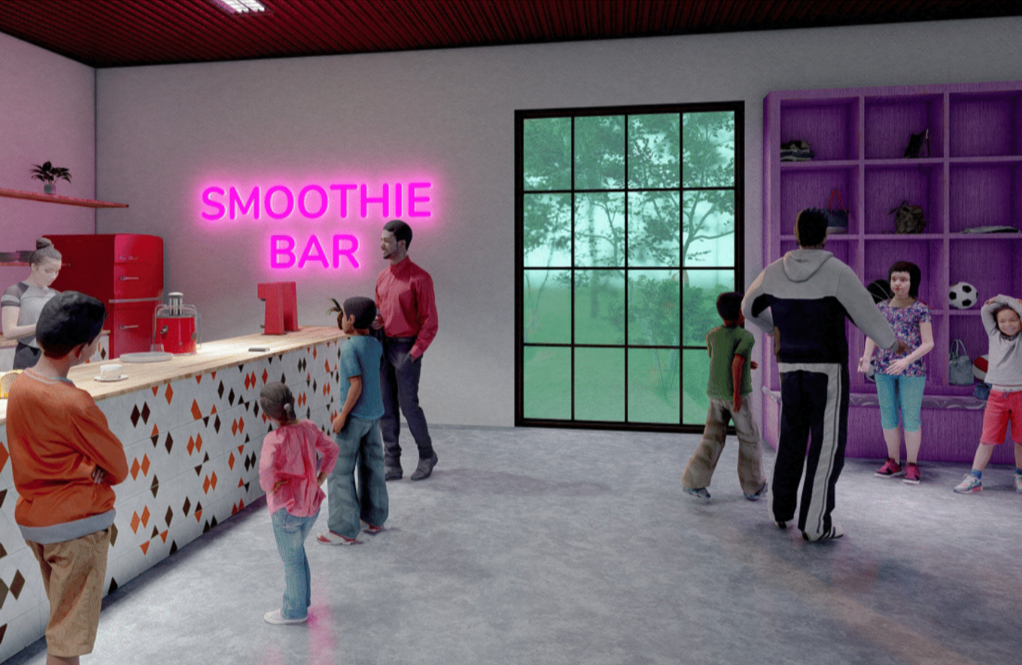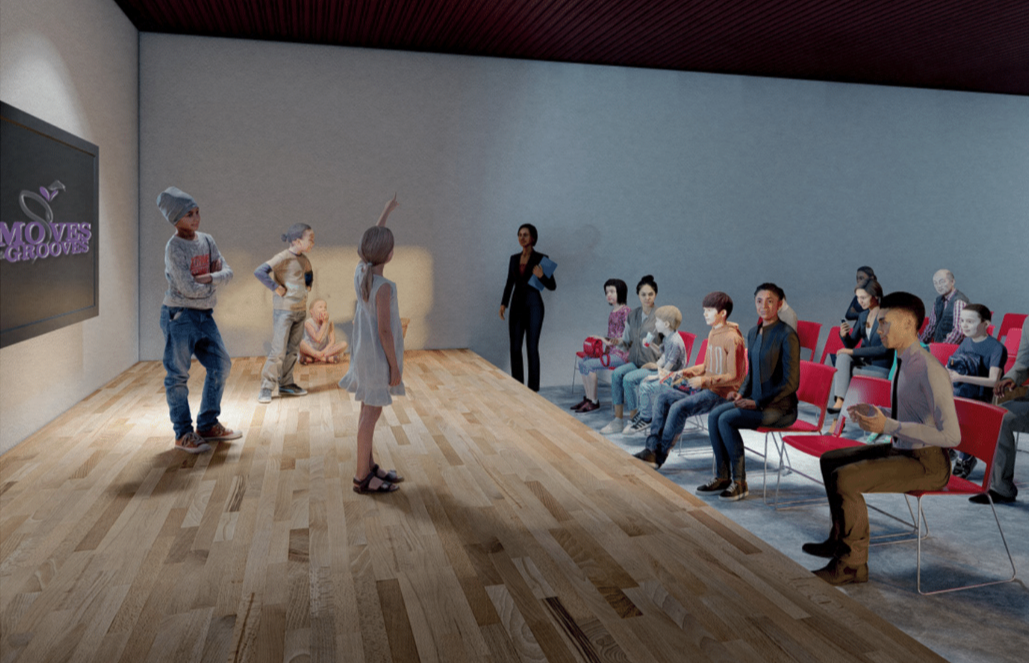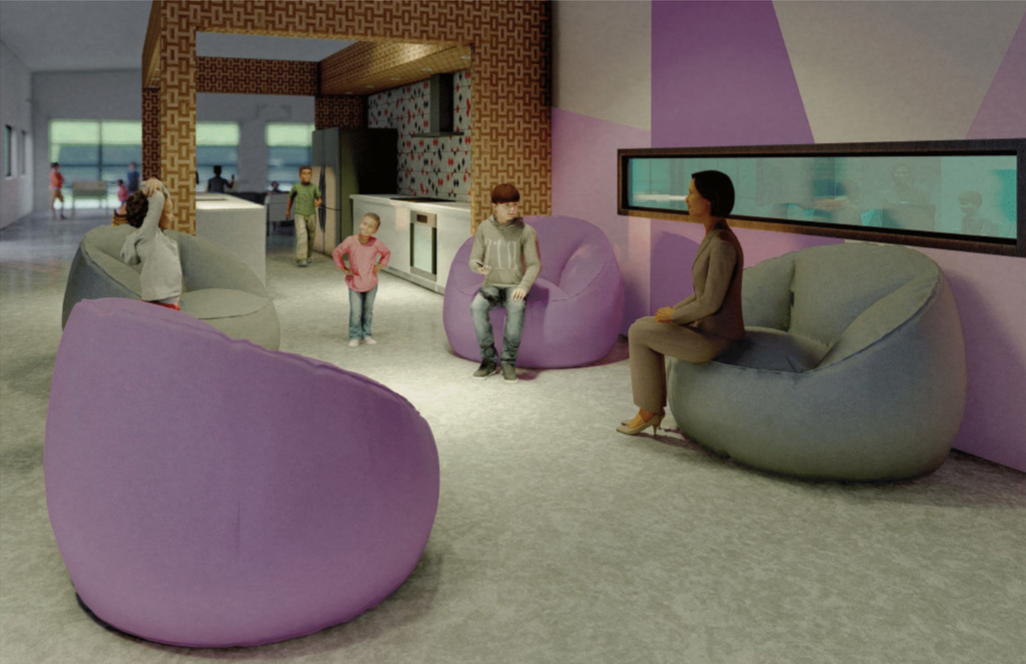Youth-Led Community Arts Center in Antioch
6 min read Moves & Grooves and the Civic Design Center partnered during the summer of 2021 to provide an Opportunity Now internship experience for a group of 24 high school youth. The youth interns were tasked with doing community engagement and designs for a youth arts center in Antioch that will be the new home for Moves and Grooves.
An image of the whole Moves & Grooves intern team
Opportunity Now interns for Moves & Grooves work on drawing designs for their future community arts center
Student Interns get the opportunity to do community research
“Step out of your comfort zone was the mantra here at Moves & Grooves. I have gained many experiences and skills from the program. I’ve learned from and worked with different people and their different personalities. I have understood another pathway in life which is architecture.”
Moves & Grooves is a 501(c)3 non-profit organization seeking to inspire youth to create for themselves and to discover, learn, and grow through the Arts. Their mission is to enhance the academic achievement of children through creative arts programming, so it only makes sense as a community arts organization, they wanted to expand their programming to include a community arts center. Most importantly, Moves & Grooves wanted their Opportunity Now high school interns to lead the project! Knowing our experience with Design Your Neighborhood, they came to us to help guide the young people through an ideation and design process.
The interns not only identified the need for a community arts center and collected ideas from the community, but they also learned how to create simple designs to add depth to their findings. This project helped to develop the interns’ team building and problem solving skills while providing them with a very serious job responsibility.
This Center will provide an opportunity for youth to be educated, celebrated and showcased.
Amplifying creativity and giving all kids a voice and a choice.
Developing Interview Skills while Growing Data
“My experience of taking surveys was something different, you have to learn how to talk to people and communicate the correct way. You will get knocked down plenty of times but as long as you keep a positive attitude and stay motivated you will get your surveys done. At first it was hard but once you learned your flow, you will get the hang of it.”
The Moves & Grooves interns began by identifying whether or not there was an interest for a community arts center and what types of activities people were interested in seeing at such a space. We started out with a training that helped them understand the “community-engaged research process”. It also helped them develop questions to ask the community in order to make sure the data collection adequately identified what is needed in the community, particularly young people’s needs.
The interns ultimately conducted 23 interviews and surveyed 125 people—this was double their goal to collect 60 surveys! While youth are the intended users of the community arts center, celebrating and showcasing youth creativity can only occur if there are visitors from the neighborhood. For this reason, the interns surveyed and interviewed people of all ages, but 38% of respondents were 18 and younger. Two thirds of respondents identified as African American.
A collection of preparation materials that the interns assembled before interviewing and surveying community members
“I would like to see Black arts and the value of Black art” Community members showed resounding interest in arts investment
They asked questions in interviews like:
What type of arts/performing arts would you like to see or do?
What are the top 2 things you would like to learn in the Center?
How could the Community Center benefit you?
During the interns’ original training, they also learned how to analyze and present the data they collected. They put together word clouds and infographics, pulled out quotes and created mood boards for their designs.
Responses to the question, “What would you like to learn more about at the community center?,” were extremely diverse with a small percentage in each category, Business, Life Skills, Cultural Education, Performing Arts, STEAM Education, and more.
“Learn how to cook cause cooking can be an art”Gretchen Trast, our Research Fellow primarily working with the interns, says, “It was so cool how [the interns] took on the gravity of the task; they were very sincere. They were flexible and open, driven by what the research was saying. They didn’t come in with preconceived notions. From my understanding, they didn’t want to speak on behalf of people; they wanted to accurately represent those 125 people that they surveyed.”
Two interns work on the storytelling portion of the design presentation
Learning the Process of Designers and Architects
Perspective drawing with magazine cutouts to show scale
The last two weeks of the internship were focused on the actual design of the community arts center. We began by teaching them some technical aspects of design, like perspectives, elevations, and floorplans, then we talked about materials used to design. First they began work as individuals to showcase their unique perspectives on the design and programming of the Center, considering the data they collected from community members. After that, they broke out into teams to create mood boards and architectural drawings using collage from magazine cut-outs paired with watercolor to refine their ideas.
Plan view of the interns’ Design Room concept
Ultimately there were two groups that designed their own community center. The interns put together presentations that described the design and showcased the different programming and uses of various space, which they showed to the public, Mrs. Cooper, and professional architects. Those guests were able to provide feedback for the interns and ultimately chose one of the student designs with which they would proceed. While the project was entirely youth driven and created, the CEO of Moves & Grooves explained that this would lead to a more professional version of their designs.
Interns present their design drawings to professional architects and community stakeholders
Here are some of the components of their designs as imagined by our Design Studio into professional 3D renderings.
Kitchen and Flex Space
The interns wanted spaces for youth to feel comfortable, safe, and be themselves. They designed a flexible lounge space to study, hangout, or just relax and relieve stress. While analyzing the data the interns noticed that there was a need for the culinary arts in the community. They planned an open kitchen with accessible areas to cook so junior chefs can expand their craft.
Flex Dance Space
For some, dance is a way to relieve stress and escape from reality. The flexible dance space has an open floor and a stage so it can serve as a practice studio or performance space.
Recreation Area
The surveys showed that people wanted spaces that could support youth wellness. The smoothie bar next to a recreation area gives youth a place to eat healthy and exercise.
Design Room
The design room strives to be a creative and innovative space where young minds can cultivate their artistic visions. The room has a space for sewing so Moves and Grooves can continue their fashion design that they already started with a line of shoes. The room has patterns to give it a fun and creative feel.
When you provide people with design tools, their age doesn’t change the final result
Our Design + Research Assistant, Taylan Tekeli, experienced that by giving the interns the right tools and the right instructions, they came up with really great designs and projects in a really short time. Taylan had so much fun spending time training and designing with the students—ultimately he felt like he was working with college level students. “There wasn’t any significant difference between them once they had those tools. After a week or two, going from not knowing how to draw a wall, then totally turning around and creating these designs; seeing their improvement was so inspiring,” Taylan reports.
We may have found some future urban planners and future coworkers through this program! Classroom learning really expedited how quickly they developed skills. We look forward to seeing more advocacy from these young people.
















